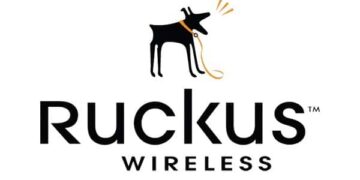Session STO2480, Rawlinson Rivera, Wade Holmes
This was a great session by the dual which covered VMware storage technology, the VCDX way. The session was a continuation of Part 1, which was at VMworld 2013. As a side note, the great Part 1 session was one of the factors figuring into my decision to go for my VCDX. I thought, “Hey I can do that too.” So buckle up and see what these two world class VCDXs have to say.
- The VCDX Way: Methodology to enable efficient technology solution design, implementation and adoption, meeting YOUR business requirements.
- Business requirements drive solution architecture: Business requirements -> Solution Architecture -> Engineering specifications
- Areas: Availability, manageability, performance, recoverability, security
Increasing diversity of devices
- Hot edge: CPU/memory bound, low latency, dominated by flash
- Cold core: capacity-centric, increasing commodity hardware
Storage Policy Based Management Solution Impact
- Availability
- Manageability
- Performance
- Recoverability
- Security
- All these areas need policy-driven, vm-centric, virtualized data plane
Choice in building a virtual SAN based solution
- Component based – Choose individual components
- Virtual SAN ready node – 40 OEM validated server configurations
- VMware EVO RAIL: Hyper-converged infrastructure
Build your own virtual SAN Node
- Any server on the VMware HCL
- At least one SSD/PCIe device and one HDD
- 1Gb/10Gb NIC – 10Gb preferred
- SAS/SATA controllers – Queue depth is key. RAID 0 and pass-through, with pass-through being preferred. Pass-though allows VSAN handle hot-plug events.
- 4GB to 16GB USB/SD flash hard or HDD
- Each disk group has a maximum of 7 disks
- Size working set to fit in the flash tier, if performance is key
Network design – Old design is more core/aggregation/access. New architecture is spine/leaf.
VSAN as a Platform: Ready nodes with T10 DIF support and encryption
Legacy Operational Model creates several challenges
- SAN, NAS and all-flash. There’s a chain from the VM down to the storage array.
- Storage controller challenges: lengthy provisioning cycles, difficult to make changes, etc.
Storage management with SDS: VASA 1.5 and higher enable VM agility and much faster provisioning
- vVols (VASA 2.0)
- VSAN (VASA 1.5)
- System labels (VASA 1.0) in vSpere 5.0
VMware software-defined storage for external storage
- Storage policy
- Enables a method to consume storage via policy while making it more secure and agile
- Policy driven, VM-centric control plane
- Virtual volumes is the primary way to enable storage policy with third party arrays
- No more LUNs/Volumes
- Enables you to publish capabilities like snapshots, replication, deduplication and QoS
- All about ease of management
- vVols will change everything!! Simplicity, with a policy based framework
Virtual Volume Architecture
- Control path uses the vendor provided VASA provider – Out of band
- Data path remains the same as before (FC, iSCSI, etc.)
- Storage admin can now define storage properties
- There is no more VMFS !
Solving Storage Provider Challenges through integeration with partner solutions
- EMC VIPR
- vSphere API for IO filtering (PernixData)
- Software driven data services driven by third parties
Enabling self-service comsumption
- vCloud Automation center integration
Key takeaways
- Start from the top down
- Vmware enables software defined storage
- SDS can enable efficiencies
- SDS can provide both CAPEX and OPEX as your datacenter grows




